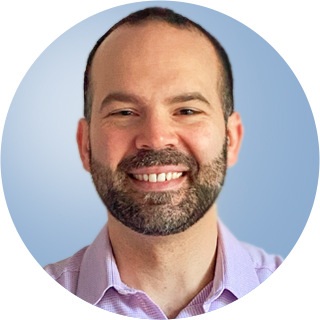As a part of my work with Dion Leadership, I’m fortunate to hear updates and progress checks from our roster of 60-plus coaches regarding the growth and development of the leaders they coach. In all of this feedback, I have noticed there continues to be one constant: as a result of their participation in a coaching program, these leaders report progress that exceeds mere competencies. Yes, they lead, motivate, inspire, and communicate better. Sure, they delegate, strategize, and plan better. Without question, they manage conflict, administer feedback, and champion accountability better. But do you know what else we consistently see and hear about? They feel healthier about their relationship with work. They have more balance. They have more confidence. They feel good about themselves and the work they do every day.
This is the simple syrup of our craft. This is the sweet stuff of our work.
This feedback also then begets a question: what if your organization made a concerted effort to create this kind of experience at scale? And what if—really, just what if—this kind of robust vitality became contagious? My adrenaline gets going at the mere thought of it. Seriously, it does! But before I get too carried away, this idea begets another important question: where does an organization start when it comes to investing in coaching?
It’s typical that our clients launch new coaching programs by running a small number of leaders through a pilot. This can involve anywhere from 5 percent to 15 percent of the organization. And within this percentage, it’s also rather typical that a specific group of people is selected, most often senior leaders or high-potential leaders. Senior leaders make sense because they’re responsible leading and communicating whatever widespread strategy or initiatives may be taking place, and also because it’s important they model the aligned and appropriate mindsets and behaviors while leading the organization. High potentials make sense because they are the future of the organization, filling the talent pipeline and checking the succession planning box. In most cases, running a small pilot tends to fit within the talent development department’s modest budget. These pilots are an opportunity to test the waters and study their ROI.
The longer I do this work, however, I can’t help but wonder if organizations are missing an opportunity when choosing this kind of small initial effort. Simply put, if an organization is looking to drive change at mass scale, then choosing to work with one or two specific groups and less than 15 percent of the organization is likely to be too narrow of an effort. I liken it to rehabbing an old home but only working on a portion of the foundation. Yes, working with high potentials will fill the talent pipeline and develop a next generation of leaders. And yes, working with C-levels will help guide the organization through a time of change. But if you’re looking to create a healthy workplace culture, achieve success in a mass-scale initiative, or make a widespread cultural change, I’m going to make a bold proposal: I think it’s time we rethink who gets to work with a coach.
It’s like a handmade arrow. Of course, an arrow has its tip, and this is where we find our senior leaders and high potentials. But for it to really be an arrow, it requires a shaft and feathers, which is where we find employees at every level. The proper construction of the tip, shaft, and feathers working together is necessary for the arrow to break though whatever surface it makes contact with. Again, you need all of these elements working together well for the arrow to perform its purpose. Similarly, I invite all of us to consider that an organization makes real, purposeful, and sustainable change when a more diverse, inclusive representation of employees at every level have the opportunity to experience the benefits of working with a coach, whether individually or in groups.
This is really the kind of effort that generates greater health in a workplace community.
This is what drives purposeful, sustainable, and positive transformation within a culture.
This is what creates both individual and collective well-being and makes for the kind of environment where people want to show up every day.
“So where’s the proof?” I’m often asked. Three factors come to mind in my experience of looking at the positive impact our coaching programs have had at scale within organizations.
- The investment of time and money signals how much the company values the coachee. This message is not lost on the coachee and often fosters a greater sense of engagement and commitment.
- Regardless of the specific goals set by the coachee in the engagement, they tend to consistently improve and optimize their communication skills as a result of working with their coach. The benefits of this alone are priceless. Whether it be improving their relationship building, creating more alignment, delegating, managing conflict, championing accountability, or leading more effectively, to name a few, they are more confident communicators.
- Coaching helps raise the coachee’s awareness around their own thinking and behavior. It helps them cultivate a growth mindset and take a more productive, proactive approach to situations, which is empowering, motivating, and quite frankly, game changing.
Let’s let that last point percolate for a moment. Imagine if your organization had more employees at every level who felt more confident, communicated well, and truly believed their organization valued them. Like, they didn’t just know this, but they felt this as part of their work experience.
Every. Day.
Imagine if, at every level, there existed a growing number of individuals who felt stronger in their ability to delegate, hold themselves and others more accountable, and manage conflict. And not in some kind of fleeting or temporary way because they recently took a class and it’s top of mind, but in a way that is lasting, responsible, and sustainable.
And finally, imagine if the opportunity to work on and develop these behaviors was available to all and not just the usual groups. Imagine if everyone in the company knew they could potentially be provided this kind of professional development opportunity.
What would this do for your organization’s culture? What would this do for you and the people you work with? How much healthier and more vital do you think everyone’s daily experience could be? I’m going to go bold and ask: Isn’t this the kind of workplace we yearn for? Isn’t this the kind of world we long to create?
Well, we can. And my experience tells me coaching is an effective and powerful place to start.
In saying this, one of the last questions I frequently then hear from C-level, HR, and Talent Development leaders involves who—as in, how do we decide at each level who gets to work with a coach? The answer to this question is actually quite simple. Look for who is motivated to change. Look for who is engaged. Look for who shows the potential or capability to influence others. Look for who is likely to take the positive behavior change they’ve experienced as a result of their coaching and utilize it to lift up others along with them. These individuals exist at every level. Find them. They will help open the doors and demonstrate the benefits of coaching at every level. And once they do, you’re off to the races.
At Dion Leadership, we have brought coaching programs to many organizations across a breadth of industries, and the formula has remained the same at its core. When employees at every level benefit from an experience like working with a coach, the overall health of the organization becomes more robust and vital. It helps to create the kind of place where people are excited to show up every day and feel a sense of accomplishment when their workday is through.
This is health.
It is wealth.
And it is possible.
If you’d like to learn more about our coaching programs, let’s set up a time to talk.
Read Next
8 Leadership Lessons from an African Safari Guide
Earlier this year, I embarked on a life-changing 15-day African safari with my...
Leadership Lessons from Selling Dion Leadership
On July 31, 2025, Dion Leadership was acquired by Gallagher. We are thrilled to be...




